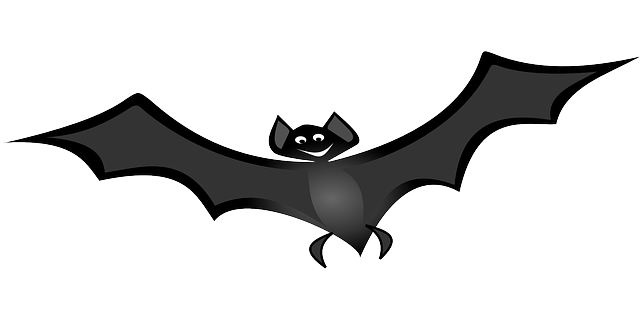Understanding bat behavior is key to effective bat control solutions. By leveraging their preference for quiet, sheltered spaces and avoiding strong scents or noise, professionals can employ strategies like sealing entry points with fine mesh or one-way devices. Specialized tools such as sonar detectors, thermal imaging cameras, and humane netting ensure safe and humane removal while preventing re-entry through thorough inspections and long-term sealing strategies. Regular maintenance checks and removing food sources further deter bats, providing a safer living environment for property owners.
Bats are fascinating creatures, but their unexpected visits can be a nuisance. Discover expert techniques to effectively manage and prevent re-entry of these flying mammals into your space. Understanding bat behavior is key to successful bat control solutions. Learn about specialized tools, safe and humane methods, and long-term strategies for maintaining a bat-free environment. Implement these practices to ensure a peaceful living space free from unwanted visitors.
Understanding Bat Behavior for Effective Exclusion
Understanding bat behavior is a crucial step in implementing effective bat control solutions for exclusion. Bats are highly adaptable and intelligent creatures, known for their remarkable navigation skills and echo-location abilities. They typically avoid areas with little or no shelter, high levels of noise, and strong scents. By recognizing these preferences, professionals can develop strategies to deter bats from re-entering spaces. For example, sealing entry points with fine mesh or using one-way exclusion devices ensures a safe exit while preventing re-entry.
Knowledge of bat behavior also helps in identifying optimal times for exclusion efforts. Bats are most active during twilight hours and tend to roost in dark, quiet spaces. Targeting these periods can increase the success rate of exclusion methods, as bats will be less likely to return immediately. Additionally, understanding their feeding patterns can guide the placement of repellents or deterrents, ensuring minimal disruption to non-target species while effectively managing bat populations.
Tools and Equipment for Bat Control Solutions
When it comes to implementing effective bat exclusion techniques, professionals rely on a range of specialized tools and equipment tailored for bat control solutions. These include durable and precise tools designed to detect and seal entry points without causing harm to the bats or damaging property. High-quality gear such as sonar detectors, thermal imaging cameras, and specialized netting are essential for identifying and mitigating bat presence. Sonar detectors emit sound waves to locate bats’ echolocation, while thermal imaging cameras help visualize hidden creatures in hard-to-reach areas. Netting, specifically designed for bat exclusion, is both humane and effective in capturing and safely removing them from structures.
Additionally, professionals use one-way valves and exclusion vents to ensure bats cannot re-enter the premises after removal. These devices allow bats to exit but prevent their return, providing a critical component of long-term bat control solutions. Gloves, protective suits, and respirators are also vital for safety measures, as handling bats directly can pose health risks. With these tools and techniques, experts can humanely and efficiently address bat infestations, ensuring the health and safety of both humans and the protected species.
Safe and Humane Exclusion Methods
When dealing with bats, it’s crucial to employ safe and humane exclusion methods as part of comprehensive bat control solutions. These techniques aim to remove bats from buildings or spaces while ensuring their well-being and preventing future re-entry. Professional bat controllers often use one-way exclusion devices, which allow bats to exit but prevent their re-entry, offering a gentle and effective solution.
In addition, sealing entry points with fine mesh netting or other approved materials is a common practice. This method effectively blocks bats from returning without causing harm. It’s essential to inspect the entire structure thoroughly, identifying all potential access points, to ensure a complete and safe exclusion. Using these humane techniques not only resolves bat infestations but also promotes the well-being of these fascinating creatures.
Preventing Re-entry: Long-term Strategies and Maintenance
Preventing re-entry is a key aspect of effective bat control solutions, ensuring these nocturnal mammals don’t return to previously occupied spaces. Long-term strategies involve a combination of physical and behavioral approaches. One powerful method is sealing entry points; this can be achieved by thoroughly inspecting buildings for any gaps or cracks where bats might enter and using appropriate materials like steel wool or caulk to close them off. Regular maintenance checks are essential, especially during seasonal changes, as bats are more active in certain periods.
Additionally, removing any potential food sources nearby can deter bats from returning. This may include securing trash cans with tight-fitting lids and ensuring there is no access to water or insect populations that might attract them. By implementing these strategies and staying vigilant, property owners can significantly reduce the likelihood of bat re-entry, providing a safer and more comfortable living environment.
When implementing bat exclusion techniques, understanding these fascinating creatures’ behavior is key. By combining the right tools, such as ultrasonic devices and one-way exclusion doors, with safe and humane methods, you can effectively prevent re-entry. Regular maintenance and long-term strategies, like sealing entry points and monitoring habitats, are crucial for achieving lasting bat control solutions, ensuring these nocturnal visitors no longer disrupt your space.
